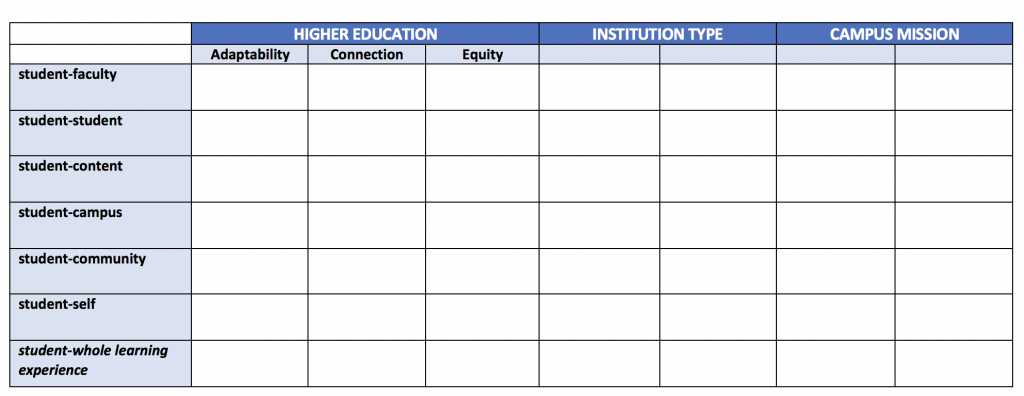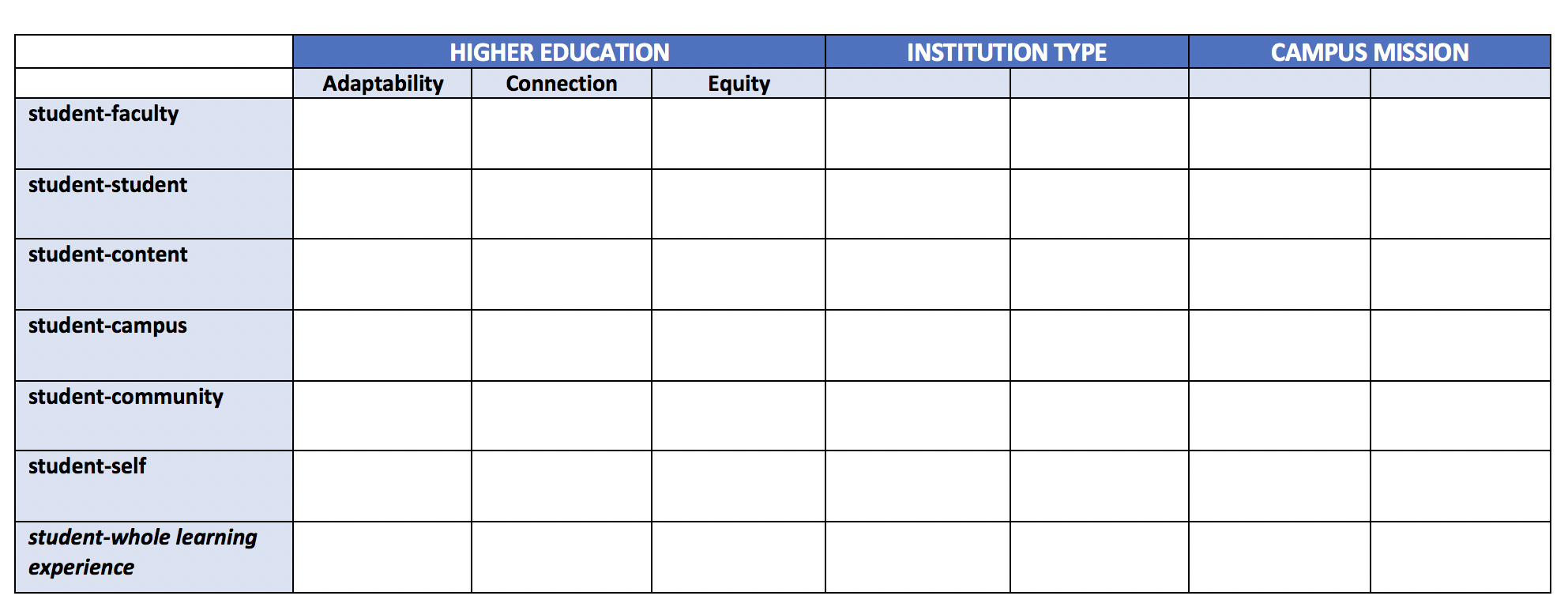by Nancy Chick
The ACE Framework provided by Plymouth State University’s Open Learning & Teaching Lab gives us a path for our next steps. According to “Values-Centered Instructional Planning,” key values are mapped onto assignment-, course-, and institution-level planning. (See Figure 1.) According to the ACE materials, these values–Adaptability, Connection, and Equity–are specific to a public research university, so “other institutions that serve markedly different demographics or who take different approaches to teaching and learning may need to revise ACE or start fresh with a framework of their own.”
The values of Adaptability, Connection, and Equity are very familiar to small, residential liberal arts colleges. I imagine HBCUs, tribal colleges, community colleges, and others will make the same claim. The three ACE values may be context-specific, but not to public research universities. Instead (and thankfully), they’re values all of higher education aspires to, especially in this moment. Using these universal values for instructional planning is a fantastic idea: we don’t want to ignore these important goals in the attempt to be institution-specific. But I also agree with their basic premise: we should “elevate … characteristics that are clear, context sensitive, values driven and mission aligned.” This strategy for planning the coming semester(s) is just another reminder for us to be as precise as we can about what distinguishes our institutions.
The levels identified in the ACE Framework (i.e., assignment, course, institution) are useful and ensure an intentional campus effort. For me, though, as we move forward at Rollins, I’d like to use the Framework for Learning at Small, Residential Liberal Arts Institutions identified in the previous blog post, “Distinctive Learning Experiences.” (See Figure 2.) We argued that
learning on the small, residential liberal arts campus happens as students develop meaningful, reflective relationships with their teachers, each other, course subjects, the broader campus, the surrounding community, and themselves–and over time, all of the above. (Chick, Anderson, Rolph, Sandlin, & Boland, 2020)
So, rather than ACE’s three levels, this adaption will map the values across the six sites of learning in our model of learning at our campuses–and the synthesis of all of those experiences. (See Figure 3.) In this way, we can get even more granular than the important goals and plans all of higher education should be considering.
There’s also room to identify values that are specific to institution types and to campus missions. For instance, I would argue that public research universities should list Research, Inquiry, or Curiosity as specific to their institution type. Community colleges would probably use Access. Our discussion of small, residential liberal arts colleges suggests that Relational would be among ours, and we would need distinguish Relational from the similar but more universal value of Connection.
In a gesture of further generosity, Plymouth State U’s Open CoLab has described specific plans within their chart, such as what Adaptability would look like at the assignment-, course-, and institution-level. This specificity gives us a strong start in our own planning with this expanded framework.
With this clear path forward, it’s time for me to get to work.
Here’s a Word version of the adapted framework for you to fill out or adapt to your context.



